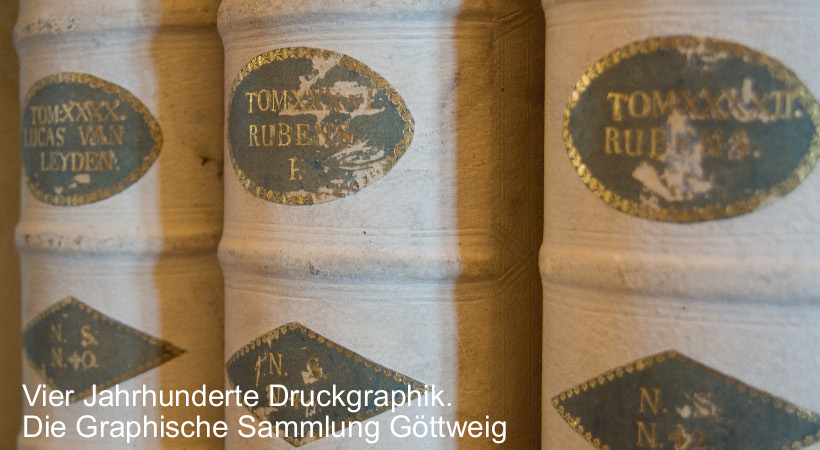

Die Graphische Sammlung Göttweig ist mit über 30.000 Blättern die größte österreichische Privatsammlung historischer Druckgraphiken. Der überwiegende Teil des Bestandes stammt aus der Renaissance- und Barockzeit und umfaßt Arbeiten von deutschen, niederländischen, italienischen, französischen und englischen Meistern. Bis in die Gegenwart wird die Sammlung durch historische Blätter und ausgesuchte moderne Druckgraphik ergänzt und erweitert. Ab 1960 wurden ausgewählte Teile der Sammlung durch Jahresausstellungen und dazugehörige Katalogpublikationen vor allem durch die rege Forschungstätigkeit des langjährigen Kustoden ao. Univ.-Prof. Dr. Gregor M. Lechner OSB einem breiteren Publikum bekannt gemacht. Die Bestände wurden im Sommer 2002 dem Zentrum für Bildwissenschaften (ZBW) der Universität für Weiterbildung Krems zur Bearbeitung, Erschließung und für Studienzwecke zur Verfügung gestellt.

Das Benediktinerstift Göttweig wurde 1083 gegründet. Der Bestand der Graphischen Sammlung basiert auf Erwerbungen durch verschiedene Konventsmitglieder seit dem 15. Jahrhundert. Erstmalige Nachricht von Graphiken im Stift Göttweig gibt eine Archivaufzeichnung aus dem Jahr 1612, die von einigen „Täfelein von Kuperstich“ berichtet, die Abt Gregor I. Schedler (reg. 1604-10) zur Wanddekoration anschaffen ließ. Seine Amtsnachfolger fügten der langsam anwachsenden Sammlung weitere Graphiken hinzu. So ließ Abt Gregor II. Heller (reg. 1648-69) unter anderem den bekannten Kupferstich der Panoramaansicht des Donautals mit dem Stift Göttweig von Matthäus Küsel anfertigen und kaufte mehrere hundert Kupferstiche an.

Als eigentlicher Gründer der Sammlung gilt Abt Gottfried Bessel (reg. 1714-49), der als Diplomat, Wissenschaftler und Kunstmäzen tätig war und unter anderem jene bedeutende Kupferstichserie von Salomon Kleiner (1700-1761) in Auftrag gab, welche die neukonzipierte barocke Stiftsanlage von Johann Lucas von Hildebrandt (1668-1745) in 15 Stichen abbildete. Die gezielten Ankäufe durch Abt Bessel erweiterten den damaligen Sammlungsbestand um über 20.000 Blätter. Wie die erhaltene Korrespondenz Bessels dokumentiert, war er für Kauf und Tausch von Graphiken mit Einzelpersonen und Institutionen im In- und Ausland in regen Kontakt. Der in sich geschlossene Grundbestand, der durch die Sammlertätigkeit einer einzelnen Person zusammengetragen wurde, macht die Sammlung zu einem hervorragenden Studienobjekt barocken Mäzenatentums.

